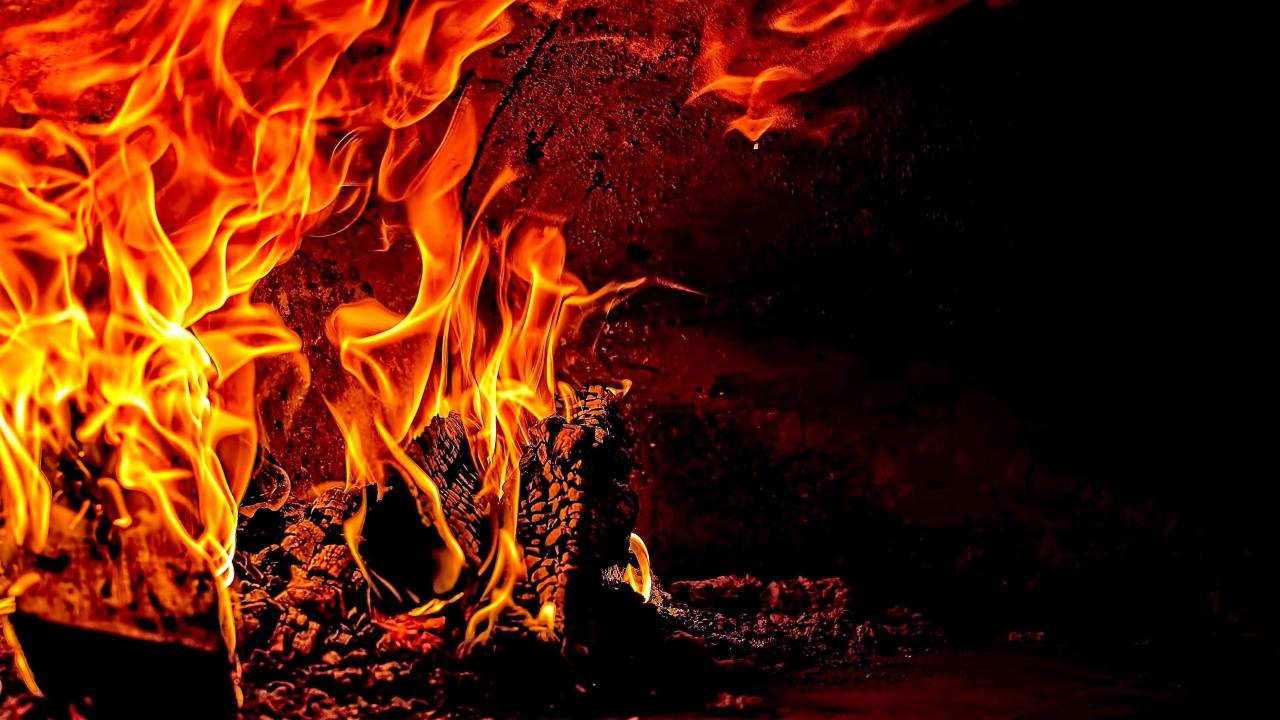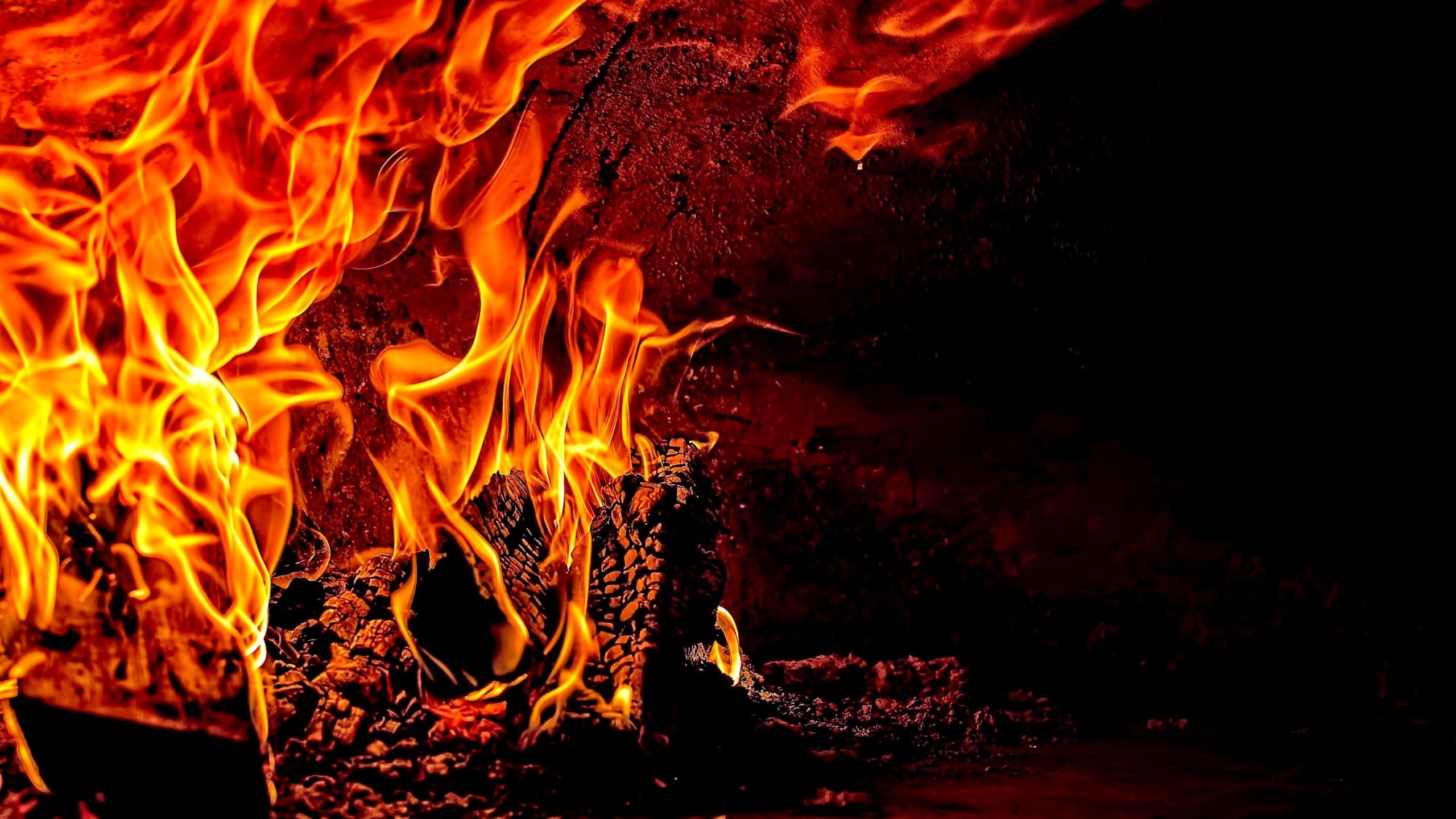Fire, a primal force of nature, has captivated humanity since time immemorial. It represents both creation and destruction, warmth and danger, purification and passion. Across cultures, its symbolism is rich and varied. In Japan, an island nation deeply attuned to the forces of nature, fire (火, hi) holds a particularly profound and multifaceted significance, intricately woven into its language, mythology, spirituality, arts, daily life, and even its modern identity. This article delves into the dynamic role of fire, exploring its lexical manifestations, its spiritual resonance, its practical applications, and its enduring symbolic power within the Japanese cultural tapestry.
The Lexicon of Flames: A Linguistic Exploration
The most fundamental term for fire in Japanese is 火 (hi). This simple kanji, often appearing as a radical, forms the basis for a vast array of fire-related vocabulary, each carrying nuanced meanings that reflect different aspects of its nature.
- 火 (hi): The general term for fire, flame, or light. It can refer to a small spark, a cooking fire, or a metaphorical fire of passion.
- 炎 (honoo): Specifically refers to a large, vibrant flame, often implying intensity or a powerful blaze. One might see honoo at a bonfire or a major fire.
- 焚火 (takibi): Denotes a bonfire or an open-air fire, typically for warmth, cooking, or festive gatherings. It evokes images of communal warmth and the outdoors.
- 火事 (kaji): This term specifically means a fire accident or a conflagration, emphasizing the destructive and dangerous aspect of uncontrolled fire. It’s a word uttered with gravity and concern.
- 火花 (hibana): Refers to a spark, often flying off metal being struck or from fireworks. It suggests brief, fleeting brilliance.
- 火の玉 (hinotama): A fireball, sometimes associated with supernatural phenomena or spirits.
- 消火 (shōka): Extinguishing a fire, highlighting the crucial act of controlling its destructive potential.
- 消防 (shōbō): Firefighting or the fire department, emphasizing the organized effort to combat fires.
Beyond these direct terms, fire permeates Japanese idioms and compound words, revealing deeper cultural insights:
- 火を見るより明らか (hi wo miru yori akiraka): "Clearer than seeing fire," meaning something is obvious or self-evident. This speaks to fire’s undeniable presence and visibility.
- 火に油を注ぐ (hi ni abura wo sosogu): "Pouring oil on a fire," equivalent to "adding fuel to the fire," meaning to exacerbate a situation.
- 火の車 (hi no kuruma): "A fiery cart," metaphorically describing being in dire financial straits or deep trouble, likening the situation to being trapped in a burning vehicle.
- 火の用心 (hi no yōjin): "Beware of fire," a common warning sign or chant, especially in winter, reflecting the constant vigilance required against fire hazards in traditionally wooden Japanese cities.
- 火花を散らす (hibana wo chirasu): "Scattering sparks," meaning to have a heated argument or intense competition, where passion and energy clash.
This rich linguistic tapestry demonstrates that fire is not a monolithic concept but a dynamic force with various manifestations, each recognized and articulated with precision in the Japanese language.
Fire in Mythology and Spirituality: A Sacred Element
In Japan, fire is more than just a physical phenomenon; it is a sacred element, intrinsically linked to the origins of the nation and the spiritual fabric of its people.
Shintoism, Japan’s indigenous religion, reveres fire as a divine entity. The most prominent deity associated with fire is Kagutsuchi (迦具土), the god of fire, born from the primordial creator deities Izanagi and Izanami. His birth, however, tragically burned Izanami, leading to her death and descent into the underworld. This myth encapsulates fire’s dual nature: its power to create life (through its divine lineage) and its destructive potential. Despite his destructive birth, Kagutsuchi is also revered in shrines, particularly those of blacksmiths and potters, as a protector against fire and a bringer of warmth and light.
The sun goddess, Amaterasu Ōmikami (天照大御神), the paramount deity of Shinto and ancestress of the Imperial Line, also embodies a form of fire – the celestial fire of the sun. Her brilliance illuminates the world, symbolizing purity, life, and the divine origin of Japan.
In Buddhism, which arrived in Japan in the 6th century, fire takes on a different but equally significant role, often symbolizing purification, wisdom, and the destruction of worldly desires. The Goma (護摩) ritual, a prominent esoteric Buddhist practice, involves burning offerings in a sacred fire. Monks chant sutras and offer wooden tablets (gomagi) inscribed with prayers, believing that the smoke carries their wishes to the deities and purifies negative karma. The fire itself is seen as an embodiment of the wisdom fire (chie no hi) that burns away ignorance and defilement. Fudō Myō-ō (不動明王), the "Immovable Wisdom King," a wrathful yet compassionate deity, is often depicted surrounded by flames, symbolizing his power to incinerate evil and lead sentient beings to enlightenment.
Furthermore, fire is one of the Godai (五大), the five elements of Japanese philosophy (earth, water, fire, wind, void), which parallel the Hindu and Buddhist mahābhūta. Ka (火), representing fire, embodies energy, passion, movement, and transformation. This elemental understanding underpins much of traditional Japanese thought, linking the physical world to spiritual and philosophical principles.
Fire in Traditional Arts, Crafts, and Daily Life
Fire’s transformative power has been indispensable to Japanese traditional crafts and daily existence for millennia.
Crafts: The art of yakimono (焼き物), or pottery, is entirely dependent on fire. From delicate tea bowls to robust sake vessels, the clay is shaped by human hands but transformed into enduring ceramics by the intense heat of kilns. Different firing techniques, temperatures, and atmospheres (e.g., wood-firing, anagama kilns) produce unique glazes and textures, making each piece a testament to fire’s artistry. Similarly, the legendary sharpness and durability of katana (刀), Japanese swords, are forged in fire. Blacksmiths meticulously heat and fold steel, hammering impurities out and shaping the blade, before a final hardening process that involves precise temperature control and quenching in water – a dance between fire and water.
Food: Fire is at the heart of Japanese culinary traditions. The irori (囲炉裏), a traditional sunken hearth, once served as the central point of a Japanese home, providing warmth, light, and a place for communal cooking. Dishes like nabe (鍋), hot pot, were simmered over the irori, fostering family gatherings. Yakitori (焼き鳥), grilled skewers, and various other forms of robatayaki (炉端焼き), hearthside grilling, showcase the Japanese mastery of cooking with charcoal (sumi, 炭), imparting a distinct smoky flavor. The precise control of charcoal heat is an art form in itself.
Architecture and Warmth: Given Japan’s history of wooden architecture, fire prevention has always been paramount. Traditional kura (蔵), or storehouses, were often built with thick earthen walls to protect valuable goods from fire. Yet, fire was also essential for warmth in winter. Beyond the irori, hibachi (火鉢), portable braziers, and kotatsu (炬燵), heated tables, provided comfort, allowing families to huddle together. Even now, the soft glow of a chochin (提灯), a traditional paper lantern, or the explosive beauty of hanabi (花火), fireworks, illuminates festivals and celebrations, demonstrating fire’s role in creating ambiance and joy.
Festivals of Fire: Celebrating Life and Purity
Japan boasts a plethora of fire festivals (hi matsuri, 火祭り) that vividly illustrate the element’s cultural importance. These festivals often serve to purify, ward off evil, pray for good harvests, or commemorate historical events.
- Kumano Nachi Taisha Fire Festival (Nachi no Hi Matsuri, 那智の火祭り): Held annually at the Nachi Grand Shrine, this is one of Japan’s most spectacular and dangerous festivals. Twelve giant, flaming torches, weighing up to 50 kg each, are carried down the steps alongside the Nachi Waterfall, symbolizing the purification of the sacred waterfall and the surrounding area.
- Gozan Okuribi (五山送り火), also known as Daimonji: A summer tradition in Kyoto, where five massive bonfires are lit on mountainsides, forming giant characters and shapes (including the character "大" for "great"). These fires are believed to guide the spirits of ancestors back to the afterlife after the Obon festival.
- Donso Matsuri (どんど焼き): A winter festival held across Japan, where New Year’s decorations, old talismans, and daruma dolls are burned in huge bonfires. This act of burning is believed to purify the items, send the deities back to the heavens, and bring good luck and health for the coming year.
- Hiwatari (火渡り), or Firewalking: Practiced by some ascetic Buddhist and Shinto sects, participants walk barefoot over hot coals as an act of purification, penance, or demonstration of spiritual power, believed to cleanse the body and mind.
- Ōmisoka (大晦日): On New Year’s Eve, many temples light large bonfires to cleanse away the previous year’s misfortunes and welcome the new year with purity.
These festivals are not merely spectacles; they are profound spiritual acts that connect participants to ancient traditions, reaffirming the community’s relationship with nature and the divine.
Fire as Metaphor and Symbol: Beyond the Physical
Beyond its literal and ritualistic manifestations, fire serves as a potent metaphor in Japanese thought and expression.
It symbolizes passion, spirit, and vitality. A person with a burning ambition might be described as having "fire in their belly." The 魂の火 (tamashii no hi), or "fire of the soul," represents one’s inner drive and life force.
Fire also embodies destruction and renewal. While a devastating fire can wipe out homes and lives, the ashes can fertilize new growth, and the act of burning can clear the way for fresh beginnings. This cyclical understanding aligns with the Buddhist concept of impermanence and the Shinto reverence for the continuous cycle of nature. The myth of the phoenix, though not indigenous to Japan, resonates with this idea of rebirth from ashes, often appearing in Japanese art and folklore.
Conversely, fire represents danger and the need for vigilance. The constant warnings of hi no yōjin are a stark reminder of its destructive potential, particularly in a country prone to earthquakes, which often lead to widespread fires. This duality of fire – its life-giving warmth and its destructive fury – is deeply ingrained in the Japanese psyche.
Conclusion: The Enduring Flame of Japan
From the ancient myths of divine creation to the modern spectacle of fireworks, fire in Japan is far more than a simple element. It is a fundamental force that has shaped the language, defined spiritual beliefs, driven artistic innovation, warmed homes, and inspired countless festivals. Its diverse lexical forms reflect its varied manifestations, while its role in mythology, from the fiery birth of Kagutsuchi to the solar brilliance of Amaterasu, anchors it in the nation’s spiritual bedrock.
Whether flickering in an irori, roaring in a blacksmith’s forge, guiding spirits at Daimonji, or being invoked for purification in a Goma ritual, fire continues to burn brightly in the heart of Japanese culture. It is a dynamic, living element, revered for its transformative power, respected for its danger, and celebrated for its ability to connect the physical world with the spiritual realm, making it an indelible and indispensable thread in the rich tapestry of Japan.


